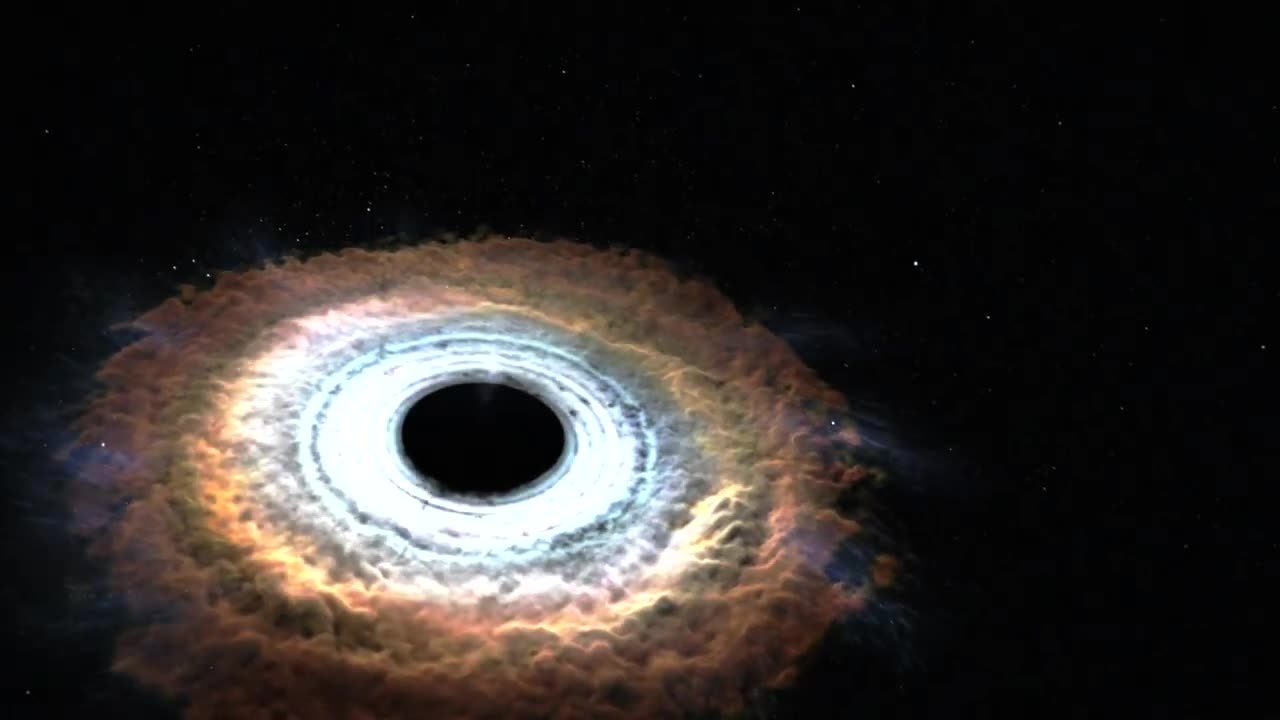Premium Only Content

NASA | Massive Black Hole Shreds Passing Star
This artist’s rendering illustrates new findings about a star shredded by a black hole. When a star wanders too close to a black hole, intense tidal forces rip the star apart. In these events, called “tidal disruptions,” some of the stellar debris is flung outward at high speed while the rest falls toward the black hole. This causes a distinct X-ray flare that can last for a few years. NASA’s Chandra X-ray Observatory, Swift Gamma-ray Burst Explorer, and ESA/NASA’s XMM-Newton collected different pieces of this astronomical puzzle in a tidal disruption event called ASASSN-14li, which was found in an optical search by the All-Sky Automated Survey for Supernovae (ASAS-SN) in November 2014. The event occurred near a supermassive black hole estimated to weigh a few million times the mass of the sun in the center of PGC 043234, a galaxy that lies about 290 million light-years away. Astronomers hope to find more events like ASASSN-14li to test theoretical models about how black holes affect their environments.
During the tidal disruption event, filaments containing much of the star's mass fall toward the black hole. Eventually these gaseous filaments merge into a smooth, hot disk glowing brightly in X-rays. As the disk forms, its central region heats up tremendously, which drives a flow of material, called a wind, away from the disk.
Music credit: Encompass by Mark Petrie from Killer Tracks.
-
 2:45:13
2:45:13
Barry Cunningham
13 hours agoCBS CAUGHT AGAIN! CHICAGO A MESS! LISA COOK IS COOKED AND MORE LABOR DAY NEWS!
96.7K47 -
 DVR
DVR
StevieTLIVE
7 hours agoMASSIVE Warzone Wins on Labor Day w/ Spartakus
23.6K1 -
 10:46:42
10:46:42
Rallied
13 hours ago $13.15 earnedWarzone Challenges w/ Doc & Bob
193K4 -
 3:26:25
3:26:25
Joe Donuts Live
6 hours ago🟢 Lost in Space with My Clones: The Alters Adventure Begins
32K3 -
 7:20:22
7:20:22
Dr Disrespect
15 hours ago🔴LIVE - DR DISRESPECT - TRIPLE THREAT CHALLENGE - WINNING AT EVERYTHING
217K12 -
 2:35:33
2:35:33
Chrono
7 hours agoBirthday-eve Stream | Helldivers II
27.7K1 -
 54:40
54:40
BonginoReport
1 day agoLABOR DAY SPECIAL! The Best of Nightly Scroll - Nightly Scroll w/ Hayley Caronia (Ep.124)
134K15 -
 2:39:21
2:39:21
Joker Effect
5 hours agoReviewing the downfall of Kick Streaming. Kick streamers welcome to Rumble! Stake bombshell found!
36.9K1 -
 1:06:10
1:06:10
Russell Brand
15 hours agoThe Greatest Lie Ever Told? - SF625
100K117 -
 3:25:13
3:25:13
elwolfpr
7 hours agoBlack Ops 6: Rise of the Relentless
14.2K1